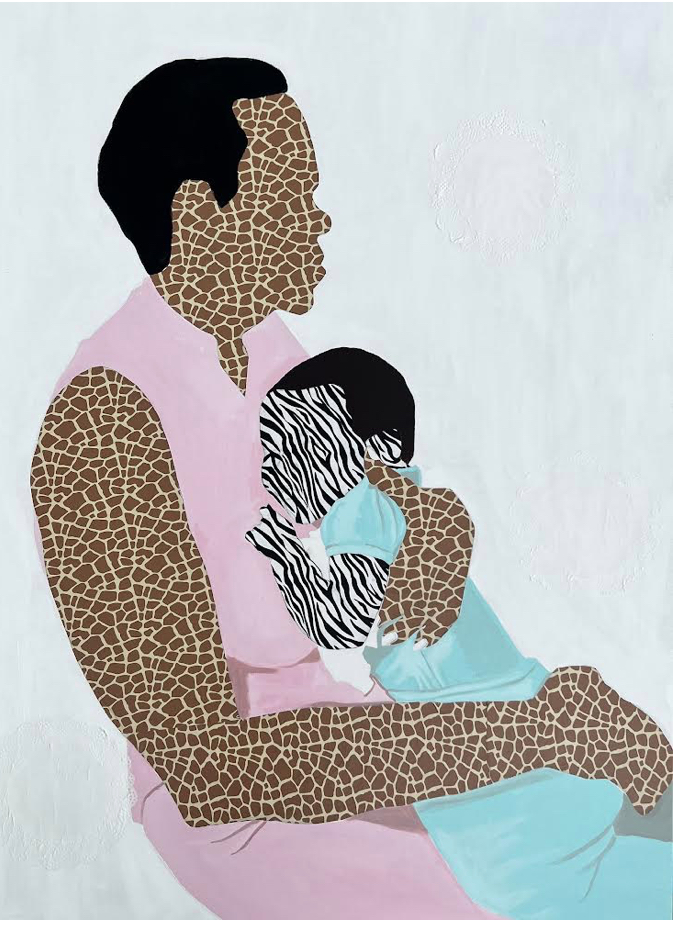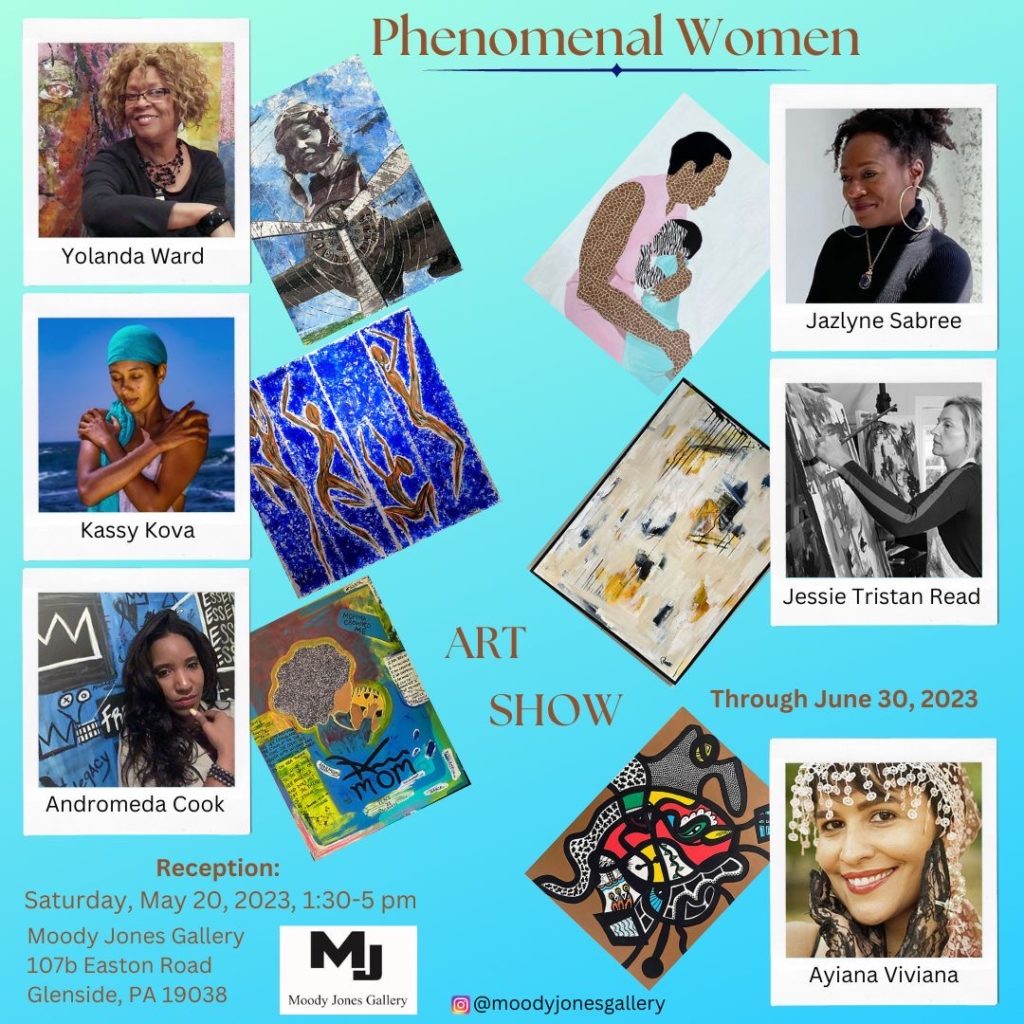Moody Jones Gallery, 107b Easton Road in Glenside presents the distinct visions of six talented female artists during its second annual “Phenomenal Women” art show. The exhibit will run through June 30.
The title is borrowed from the poem “Phenomenal Woman,” from Maya Angelou’s 1978 book of poetry
“And Still I Rise.”
A reception for the artists will be held from 1:30pm – 5:00pm on Saturday, May 20, at the gallery. Several Artist Talks will be scheduled during the show.
“This annual show features six women with an individual perspective that each of them reflects
in their works,” Adrian Moody, who co-owns the gallery with his wife Robyn Jones, said. “Maya Angelou has left us a legacy of creativity and activism. An author, poet, historian, songwriter, playwright, dancer, stage and screen producer, director, performer, singer and civil rights activist, she was a symbol of a Black ‘Phenomenal Woman.’”





Moody says that the exhibit acknowledges Angelou’s paean to Black women, as exemplified in
her quote: “I am grateful to be a woman. I must have done something great in another life.”
Here are the artists in the exhibit and statements on their works:
Andromeda Cook is a former elementary school teacher who counts Jean-Michel Basquiat among her influences. Cook sees her art as a source of healing. “I use my paint brush, canvas, paint and whatever else I’m attracted to nurture my inner child,” says Cook. “With every brush stroke, every written word … I heal. My art is imbued with healing frequencies, affirmations, Bible verses, sacred geometry and everything that’s love.”
Jessie Tristan Read creates abstract paintings that are as free-flowing as jazz, from which she draws her inspiration. She works in pencil, charcoal, pastels and acrylic paint on canvas. “I am drawn to the sort of rigorous expression that you find in jazz compositions,” says Read, who was born in Florence, Italy, and now lives in Philadelphia. “If music could become a painting, a canvas woud appear to be free-form, flowing, and a river of expression, tight and sharp, but completely free at the same time. I love music, but I can’t sing, so I paint. It is my way of telling without singing a word.”
Jazlyn Sabree is a painter who teaches art to high school students in New Jersey. She uses vibrant paint and bold messages to highlight social justice-issues that affect Black people. She is a triple minority, she says, by race (African American), sex (female) and disability (lupus). Her experiences with all three have guided her work. “If we open our eyes to the world around us,” she says in her bio, “we realize what discussions must be had. If we close our eyes to the world around us, we realize what parts of ourselves must be healed. Through every bold and vibrant piece, she balances the reality of social-justice issues and the healing that comes from a beautiful work of art.”
Kassy Kova starts her painting process with an idea, which attaches itself to something tangible, such as an item in her studio or on the street, she says. The idea sometimes emerges from the material itself – a slab of marble, a wooden door, crushed charcoal or even her body, which itself becomes a canvas.
“Inevitably, my work is a product of my own perspective,” says Kova, who grew up in Southern California in a diverse family. “Multicultural, mixed race, female, American, chronic expatriate. I like to extrapolate from my heritage: I am Ivorian-Italian-Belgian-German-Norwegian, or, in the United States “half Black, half white.”
Ayiana Viviana is an abstract artist who uses her art to tell stories, starting with free-form lines that interconnect and allow viewers to dig deeper into their psyches. Her “overarching quest (is) to find significance and meaning in the chaos of life and give personal significance to what we see and experience around us,” she says. She is also a writer and photographer.
“I chase after beauty and sometimes what I capture is a slice of time preserved in photographic frame,” she says. “Sometimes a tantalizing plate of food captures my eye and other times it’s letters hidden in structures that I piece together to create words.”
Yolanda Ward is a paper-collage artist with the instincts of a quilter.
“Layering the bits and pieces of the paper to comprise the artwork connects me to the quilters throughout history and today, and the way they told and tell their story,” she writes in her artist statement. “There is magic in the smallest things in life … for me it’s the bits and pieces of paper.”
Ward spent her career in corporate America, her last job as the creative director of a Fortune 500 company. She spent some time in Italy studying papermaking with a master craftsman.


